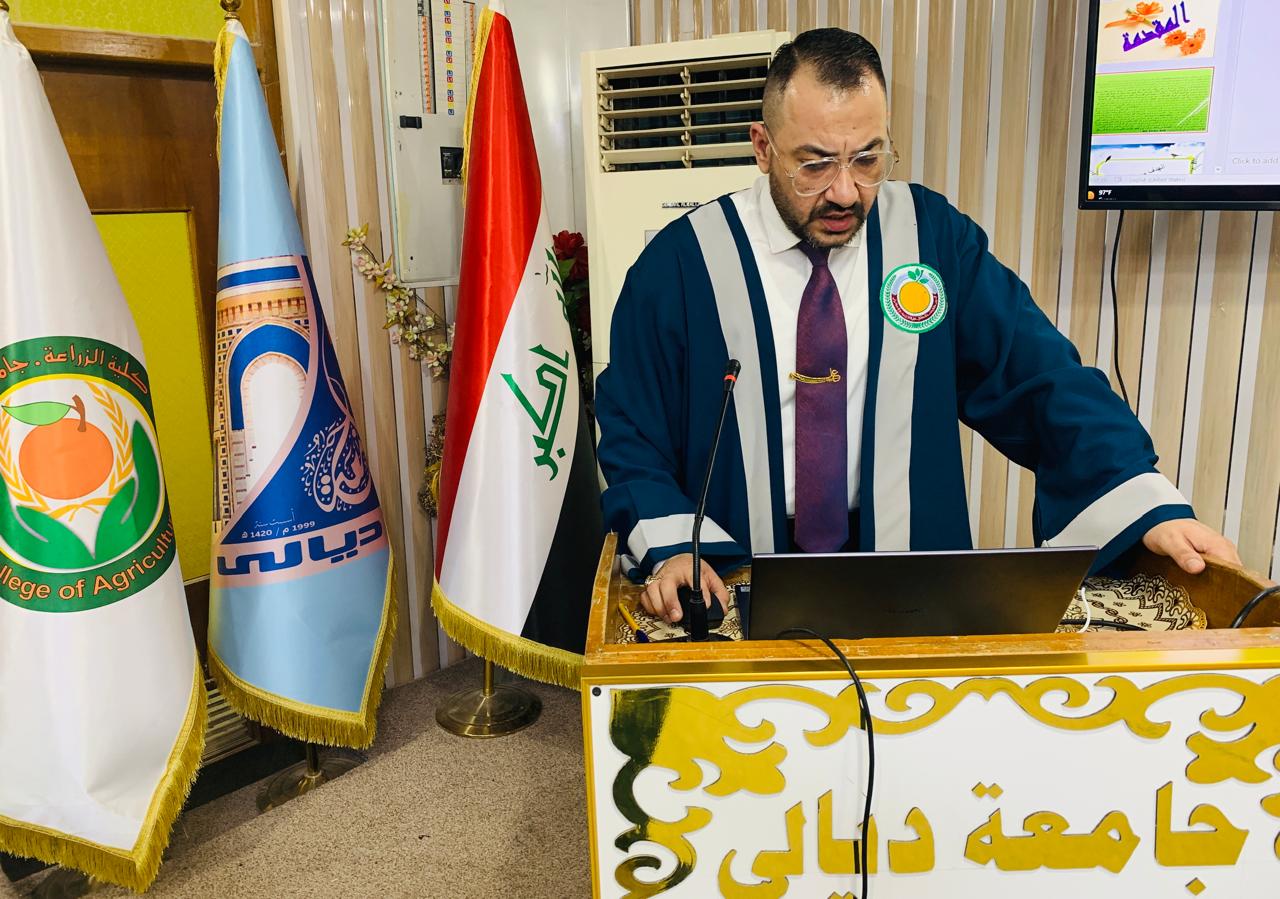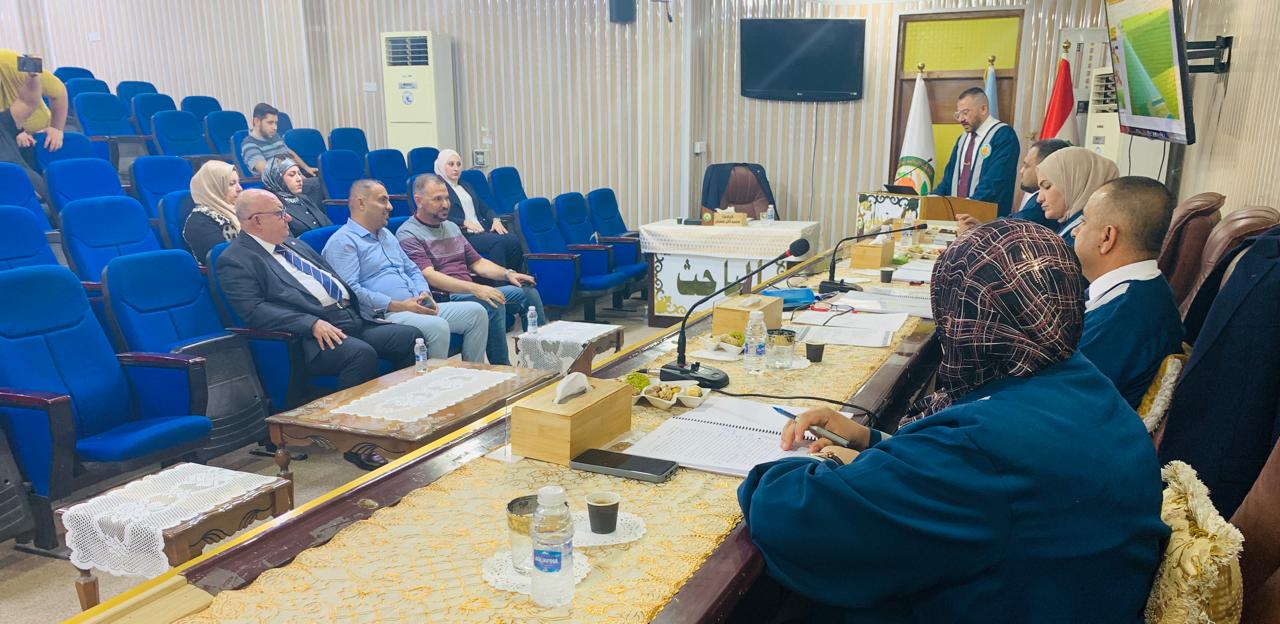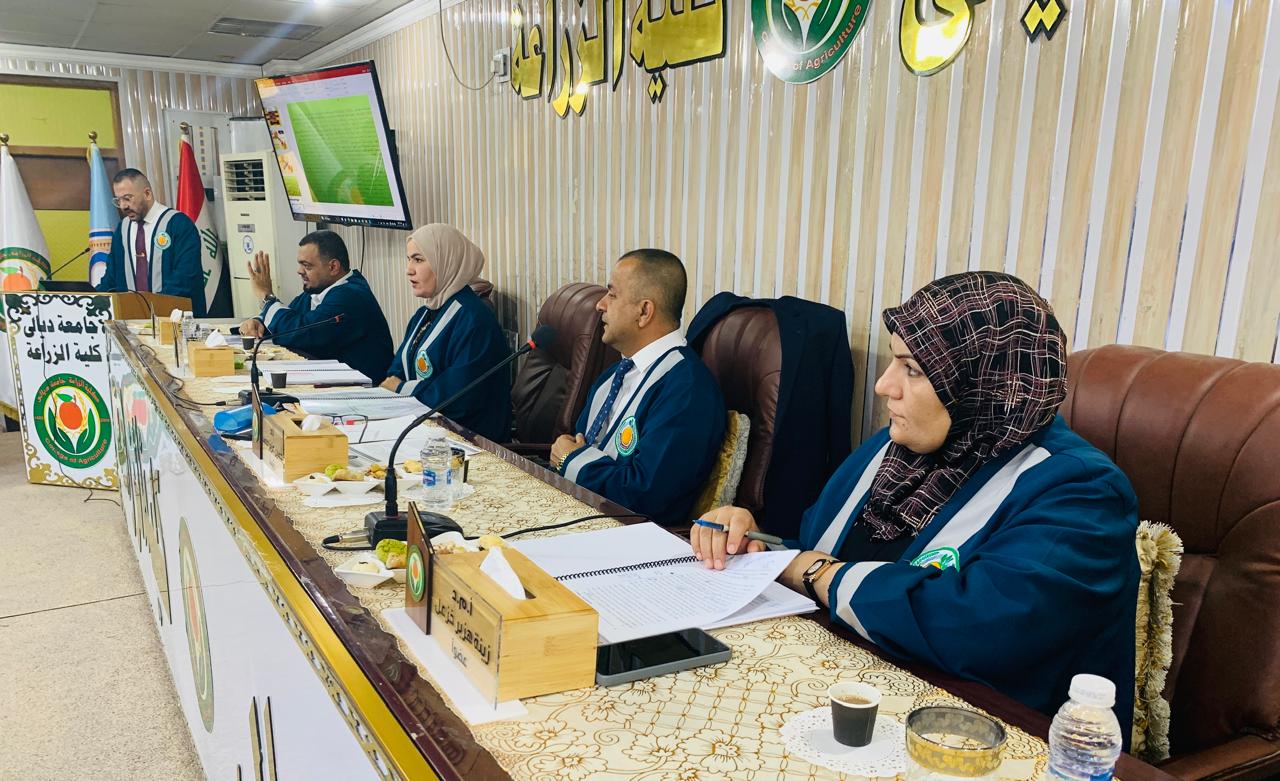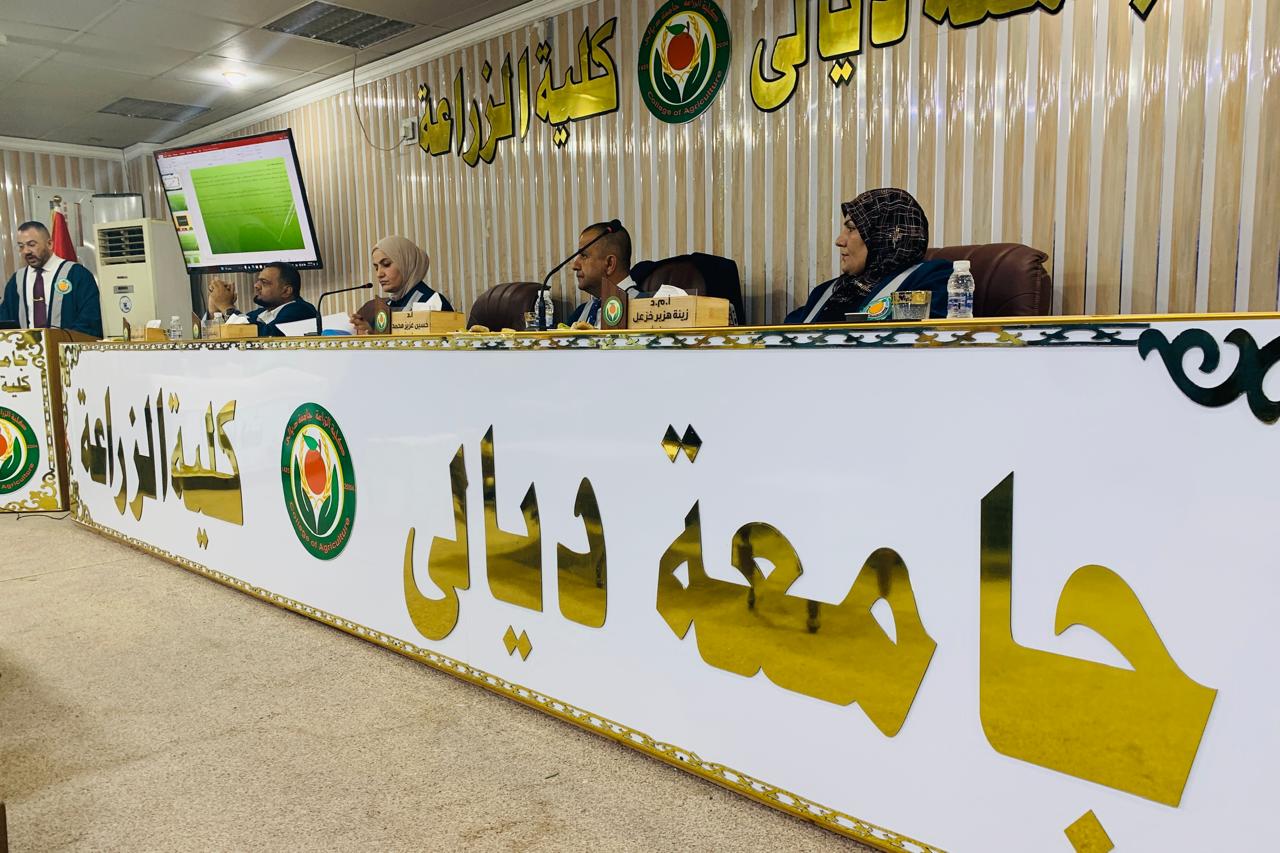A master’s thesis at the College of Agriculture focused on “The Response of Barhi Date Palm Trees to Pollination with Different Pollen Sources and Calcium Spraying.

The College of Agriculture at the University of Diyala discussed a master’s thesis entitled “The Response of Barhi Date Palm Trees to Pollination with Different Pollen Sources and Calcium Spraying.”
The study, presented by Mohammed Thaer Ghadban Shallan, aimed to determine the impact of different pollen sources on fruit set percentage and various fruit traits. It also sought to address the issue of low fruit set in Barhi date palms by using multiple pollen sources and to evaluate the effect of calcium spraying on certain yield characteristics.
The study reached several conclusions:
-
Pollen sources significantly influenced the physical and chemical characteristics of date fruits, with the mixed pollen from Ghanami Red and Ghanami Yellow outperforming all other pollen sources in both physical and chemical traits.
-
Foliar spraying with calcium improved all measured physical and chemical traits. The application of calcium at a concentration of 2000 mg/L resulted in the best improvements.
-
The interaction between pollen sources and calcium spraying showed statistically significant effects on all physical and chemical traits, with the combination of mixed Ghanami Red + Ghanami Yellow pollen and calcium spraying at 2000 mg/L yielding the most favorable results.
The study provided several recommendations:
-
Conduct further research to evaluate the response of other date palm varieties to calcium spraying.
-
Adopt the concentration of 2000 mg/L of calcium in the production of Barhi dates, as it yielded the best outcomes in both physical and chemical traits.
-
Utilize mixed pollen from Ghanami Red and Ghanami Yellow to enhance the physical and chemical characteristics of Barhi date palm fruits.







